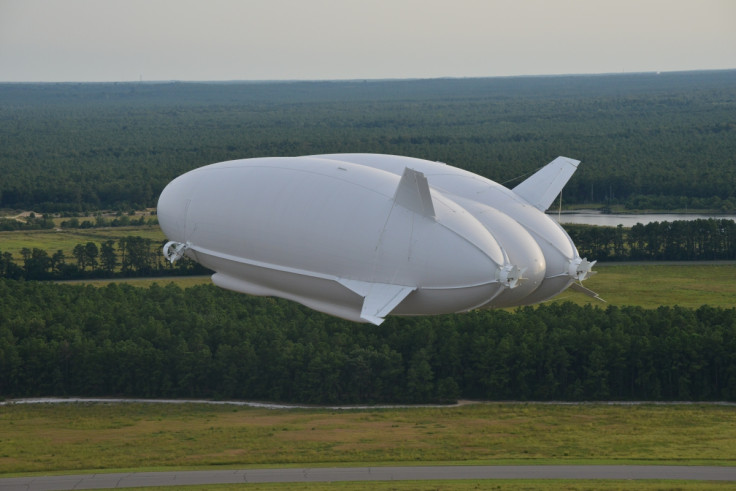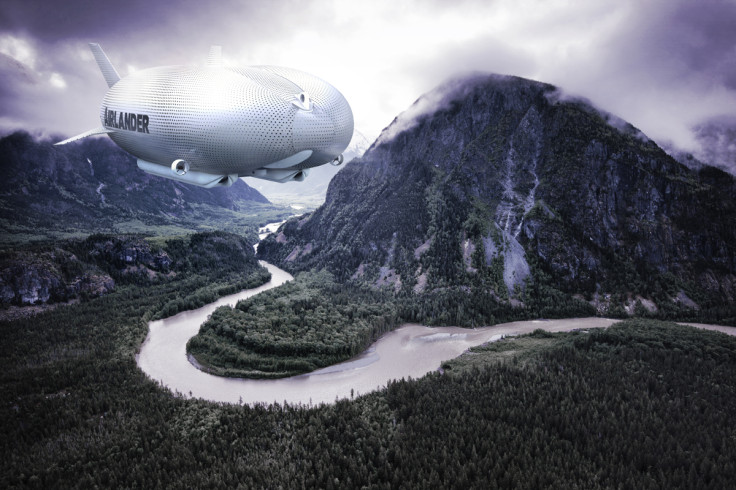Airlander 10: World's biggest aircraft will take to the skies in March

The world's longest and largest aircraft, the Airlander 10 has been given a launch date. In March the airship, which dwarfs the current world's largest passenger jet, the Airbus A380, will take to the skies for its maiden test flight over Bedfordshire, UK.
At 92m long and 43.5m wide this airship is the size of a football pitch. Its huge size comes from its frameless helium-filled hull, which can carry 10-tonne payloads.
The Airland 10 can take off vertically and hit cruising altitudes of 20,000ft. However, during its test flight it will cruise at only 4,000ft and won't stray further than 17.25 miles from its take-off spot.
The Airlander 10 is expected to fulfil several roles. As a passenger aircraft it could transport up to 48 people in complete comfort, with passengers able to roam around freely its cabins, looking out of floor-to-ceiling windows. The airship's four 350hp engines can propel it at 92mph – fast enough to fly between London and Paris in less than 2.5 hours – and it can stay airborne for two weeks.
The Airlander promises to be able to lift heavier payloads than passenger planes, while producing far less noise and pollution, and having a smaller carbon footprint.
The Airlander 10 in numbers
Length: 9m
Width: 43.5m
Height: 26m
Speed: 92mph
Power: 4 x 350 hp, 4 litre V8 direct injection, turbocharged diesel engines
Number of passengers: 48 plus flight crew
Total capacity: 38,000m cubed
The vessel is designed and developed by UK-based company Hybrid Air Vehicles (HAV). It was originally intended for use by the US military as a support ship to soldiers in Afghanistan.
When defence budget was slashed, the project returned to the UK where investors – including the UK government, crowd-sourced funding and celebrity supporters such as Iron Maiden singer Bruce Dickinson and Carol Vorderman – provided enough money for it to continue.
When it is ready for service, the Airlander 10 could be used in a number of ways, from an intercity flight service to observation, surveillance, tourism or the military, as it can land and take off on most surfaces without a runway and can operate in extreme cold and hot climates.

"We've had a lot of interest in operators looking at luxury tourism and safaris and various sorts of leisure flying. We think that will be an amazing experience – slow-flight, floor-to-ceiling windows, just being able to watch what's going on," said HAV's Chris Daniels.
Unlike traditional airships, the Airlander has no internal structure, but it becomes rigid when it is filled with helium. Its hull's composition includes a woven fabric for strength on the inside, and an outside coating of polyvinyl fluoride (PVF), sandwiching a mylar film to hold the helium.

According HAV's blog, the Airlander's engineers are in the final stages of attaching the engines and fins ahead of its milestone flight. There will not be any passengers during this test, as HAV intends to introduce the passenger module in the future.
HAV expects that it will manufacture at least 10 Airlanders a year, within five years' time.
While the Airlander makes the A380 look like a small fry, it is small compared to the ill-fated German-built Hindenburg airship, which was nearly three times as long at 245m. This ambitious German liner made 63 flights, before the hydrogen-filled craft burst into flames in 1939, claiming the lives of 35 people.
© Copyright IBTimes 2024. All rights reserved.






